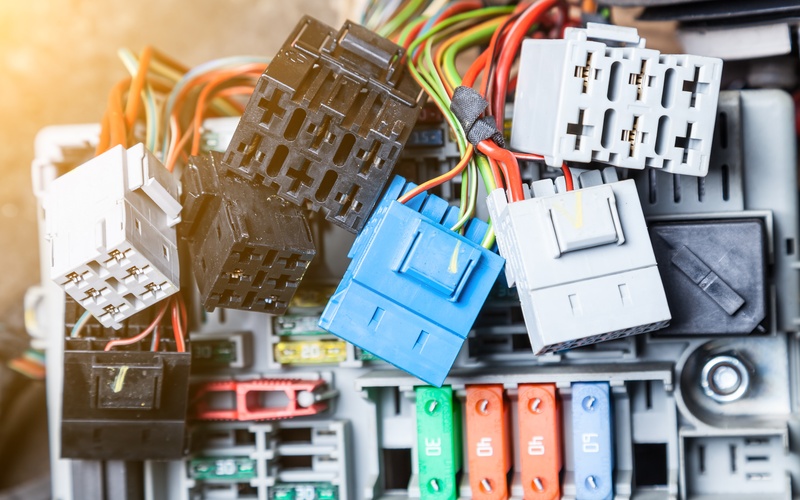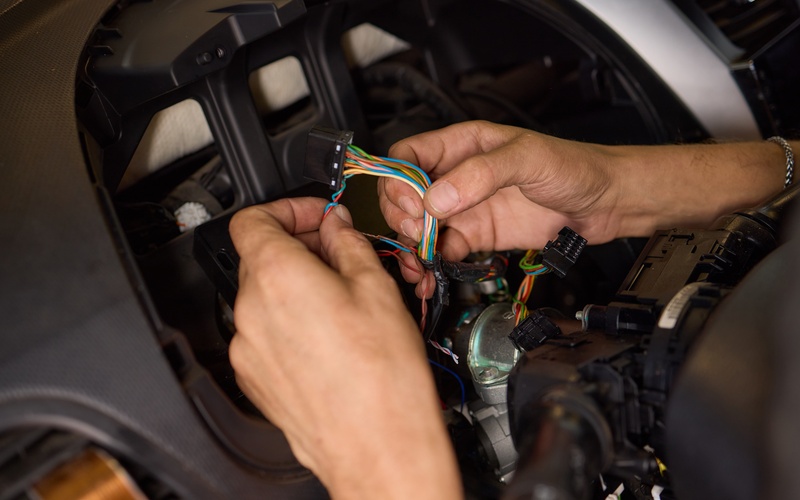Debunking Myths About Automotive Electrical Connectors
Debunking Myths About Automotive Electrical Connectors

Automotive electrical connectors are critical to the performance of modern vehicles, yet misconceptions about their capabilities, reliability, and standards are everywhere. This misinformation could lead to poor decisions that impact the quality and efficiency of your projects. That’s why we aim to set the record straight by debunking myths about automotive electrical connectors and providing clear, accurate insights into their design, functionality, and use. By the end, you’ll feel confident choosing connectors that meet your needs.
Myth 1: All Automotive Electrical Connectors Are the Same
There is a persistent belief that automotive connectors are standardized and interchangeable across all makes, models, and applications. This couldn’t be further from the truth. Automotive electrical connectors vary significantly in terms of size, material, voltage capacity, and sealing technology. Manufacturers design connectors for specific applications, and underestimating these differences can lead to mismatched components and failures in the electrical system. For instance, weatherproof connectors might include rubber seals to protect against moisture and debris, while others are designed purely for internal systems with no sealing. This is why knowing the exact requirements of your electrical system is essential.
Myth 2: Cheap Connectors Work Just As Well as Premium Options
Price is always a factor in purchasing decisions, but assuming that low-cost connectors function as effectively as premium ones is a dangerous mistake. Cheap connectors often use substandard materials, such as inferior-grade plastics or metals prone to corrosion. This compromises both their electrical conductivity and physical durability. On the other hand, premium connectors are built with high-quality materials like brass or plated contacts and are often engineered to meet rigorous testing standards. While saving money on low-cost components might seem appealing, the risks far outweigh the benefits. Downtime and replacement costs from failures can exceed the initial savings by a wide margin.
Myth 3: Automotive Electrical Connectors Don’t Need Maintenance
Some assume that once installed, automotive connectors require no care or attention. However, connectors operating under severe conditions demand vigilant maintenance. Dust, grease, and oxidation can interfere with electrical conductivity over time. Addressing these issues with routine inspections and appropriate cleaning keeps connectors in top condition. Use dielectric grease for added protection, as it prevents moisture intrusion and corrosion without disrupting conductivity. Just as vehicles require regular oil changes and brake checks, connectors benefit from periodic maintenance to ensure long-lasting performance.

Myth 4: One Connector Can Handle Any Electrical Load
Many believe that a single connector type can handle any electrical load, which is incorrect. Each connector is designed to handle specific amperage and voltage limits, and exceeding these limits results in overheating, voltage drops, or electrical fires. Whether you’re working on a 12V system for lighting or a high-voltage system for an EV application, making sure the connector has a proper rating is non-negotiable. Overlooking this aspect can lead to catastrophic failure, especially in automotive systems where reliability and safety are paramount. Carefully review the specifications before purchasing or installing any connector to match the correct load requirements.
Myth 5: Waterproof Connectors Are Completely Sealed Against Every Condition
While waterproof connectors are better suited for harsh environments, labeling them impenetrable is overly simplistic. Waterproofing may protect against rain and incidental splashes, but prolonged submersion, extreme temperatures, or exposure to solvents can still compromise the seals. Understanding the IP (ingress protection) ratings is key to determining the performance of a waterproof connector. For instance, a connector rated IP67 can withstand submersion in water up to one meter, but it won’t necessarily handle high-pressure water jets or chemicals. Misjudging these limitations can lead to connector failures when used in demanding applications.
Myth 6: Connectors Never Fail if Installed Correctly
The notion that correctly installed connectors will never fail isn’t accurate. Although proper installation minimizes risks, environmental conditions, material fatigue, and mechanical stress still contribute to eventual wear and tear. Even connectors made of top-tier materials can fail if exposed to unanticipated strain or chemical interaction. Regular monitoring and replacement based on usage intervals or visual signs of degradation can prevent electrical disruptions.
Myth 7: Tinning Wire Ends Always Improves Connection Reliability
Tinning bare wire ends before inserting them into a terminal or connector is a sure-fire way to improve reliability. However, this practice can create more problems in automotive connectors than it solves. The solder used for tinning creates a softer material interface, which compresses under pressure from screw terminals or crimp connections. Over time, this leads to loose connections and poor electrical contact. Instead, professional-grade connectors perform best when paired with crimped terminals designed for use with untinned wires.
Myth 8: Older Vehicles Don’t Need Modern Connectors
Many people assume that older vehicle models can function effectively without modern connector technology. While older connectors may have been adequate in their time, advancements in materials and engineering provide superior alternatives. Modern connectors offer better corrosion resistance, higher temperature tolerances, and easier installation. Retrofitting older vehicles with updated connectors improves reliability and reduces maintenance costs, particularly for cars that are frequently exposed to rough conditions. This is an investment worth considering for anyone maintaining or restoring vintage automobiles.

Myth 9: Automotive Connectors Are Universally Easy To Install
While the marketing of connectors may emphasize straightforward installations, real-world applications tell a different story. Installation challenges can arise due to inadequate tools or improper crimping techniques, frustrating even seasoned professionals. High-quality connectors generally require compatible crimp tools to ensure a secure fit. Additionally, some connectors may feature locking mechanisms that require precise alignment during assembly. Thoroughly review installation guidelines and invest in appropriate tools to avoid costly rework.
Myth 10: All Wire Types Work Well With Any Connector
Choosing the wrong wire type can render even the best connector ineffective. Stranded and solid-core wires have fundamentally different characteristics that impact their compatibility with connectors. Stranded wires excel at handling vibration, making them ideal for vehicles, while solid-core wires are more rigid and prone to breakage under similar conditions. Additionally, wire gauge must align with the connector’s specifications to maintain safe and efficient operation. Failure to consider these factors compromises electrical conductivity and threatens long-term durability.
Choose Reliable Connectors for Your Projects
By understanding the truth behind these common myths about automotive electrical connectors, you can save time and money and gain confidence in handling complex vehicle systems effectively. At Connector Experts, we provide a range of high-quality connectors, including 3-wire connectors, so you can find durable, performance-driven solutions for your projects. When it comes to automotive electrical systems, don’t settle for less than the best.

You must login to post comments.